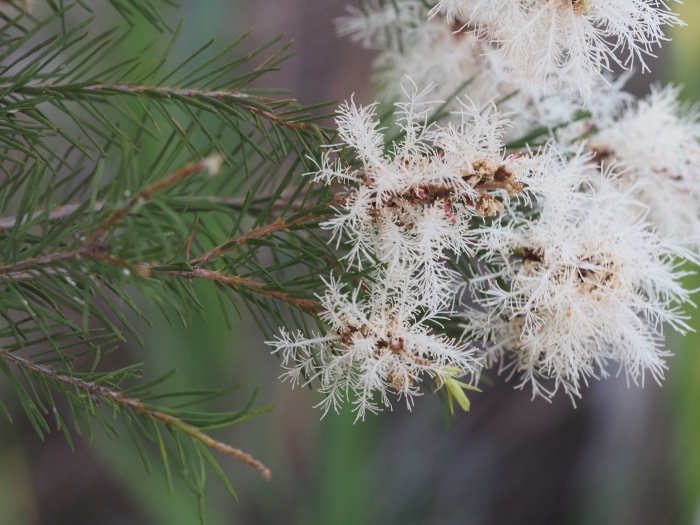Tea Tree
(Melaleuca alternifolia)
Tea Tree (Melaleuca alternifolia)
/
/

Geoff Derrin
CC BY-SA 4.0
Image By:
Geoff Derrin
Recorded By:
Copyright:
CC BY-SA 4.0
Copyright Notice:
Photo by: Geoff Derrin | License Type: CC BY-SA 4.0 | License URL: https://creativecommons.org/licenses/by-sa/4.0 | Uploader: Gderrin | Publisher: Wikimedia Commons | Title: Melaleuca_alternifolia_flowers.jpg | Notes: User created page with UploadWizard |






















Estimated Native Range
Summary
Melaleuca alternifolia, commonly known as Tea Tree, is an evergreen shrub or small tree native to open woodlands and along streams in Eastern Australia. It typically grows to about 7 m (20 ft) with a bushy crown and distinctive whitish, papery bark that peels easily. The foliage is linear, 10–35 mm long and 1 mm wide, often appearing needle-like. Flowers are borne in white or cream-colored dense spikes 3–5 cm (1–2 in) long, usually blooming in spring to early summer. The flowers are showy, giving the tree a fluffy appearance when in full bloom. Following flowering, small woody, cup-shaped fruit, 2–3 mm (0.08–0.1 in) in diameter, are scattered along the branches.
Tea Tree is valued for its essential oil, which is extracted from the leaves and used for its antiseptic properties. In cultivation, it is often grown as an ornamental plant for its attractive foliage and flowers, and can be used in windbreaks or for erosion control. It adapts to a wide range of soils but prefers well-drained, sandy loams. Tea Tree thrives in full sun to part shade and requires moderate water once established. It is generally easy to maintain but can be susceptible to root rot in poorly drained soils. While it is not known for aggressive roots, it can become invasive outside its native range, so caution is advised when planting in non-native areas.CC BY-SA 4.0
Tea Tree is valued for its essential oil, which is extracted from the leaves and used for its antiseptic properties. In cultivation, it is often grown as an ornamental plant for its attractive foliage and flowers, and can be used in windbreaks or for erosion control. It adapts to a wide range of soils but prefers well-drained, sandy loams. Tea Tree thrives in full sun to part shade and requires moderate water once established. It is generally easy to maintain but can be susceptible to root rot in poorly drained soils. While it is not known for aggressive roots, it can become invasive outside its native range, so caution is advised when planting in non-native areas.CC BY-SA 4.0
Plant Description
- Plant Type: Shrub
- Height: 12-21 feet
- Width: 6-13 feet
- Growth Rate: Moderate, Rapid
- Flower Color: White, Cream
- Flowering Season: Spring, Summer
- Leaf Retention: Evergreen
Growth Requirements
- Sun: Full Sun
- Water: Medium
- Drainage: Medium
Common Uses
Bee Garden, Bird Garden, Butterfly Garden, Hedges, Hummingbird Garden, Low Maintenance, Showy Flowers, Street Planting
Natural Habitat
Open woodlands and along streams in Eastern Australia
Other Names
Common Names: Narrow-Leaf Paperbark, Teatree, Narrow-Leaf Teatree, Teoljebuske
Scientific Names: , Melaleuca alternifolia, Melaleuca linariifolia var. alternifolia, Melaleuca linearifolia var. alternifolia,
GBIF Accepted Name: Melaleuca alternifolia (Maiden & Betche) Cheel